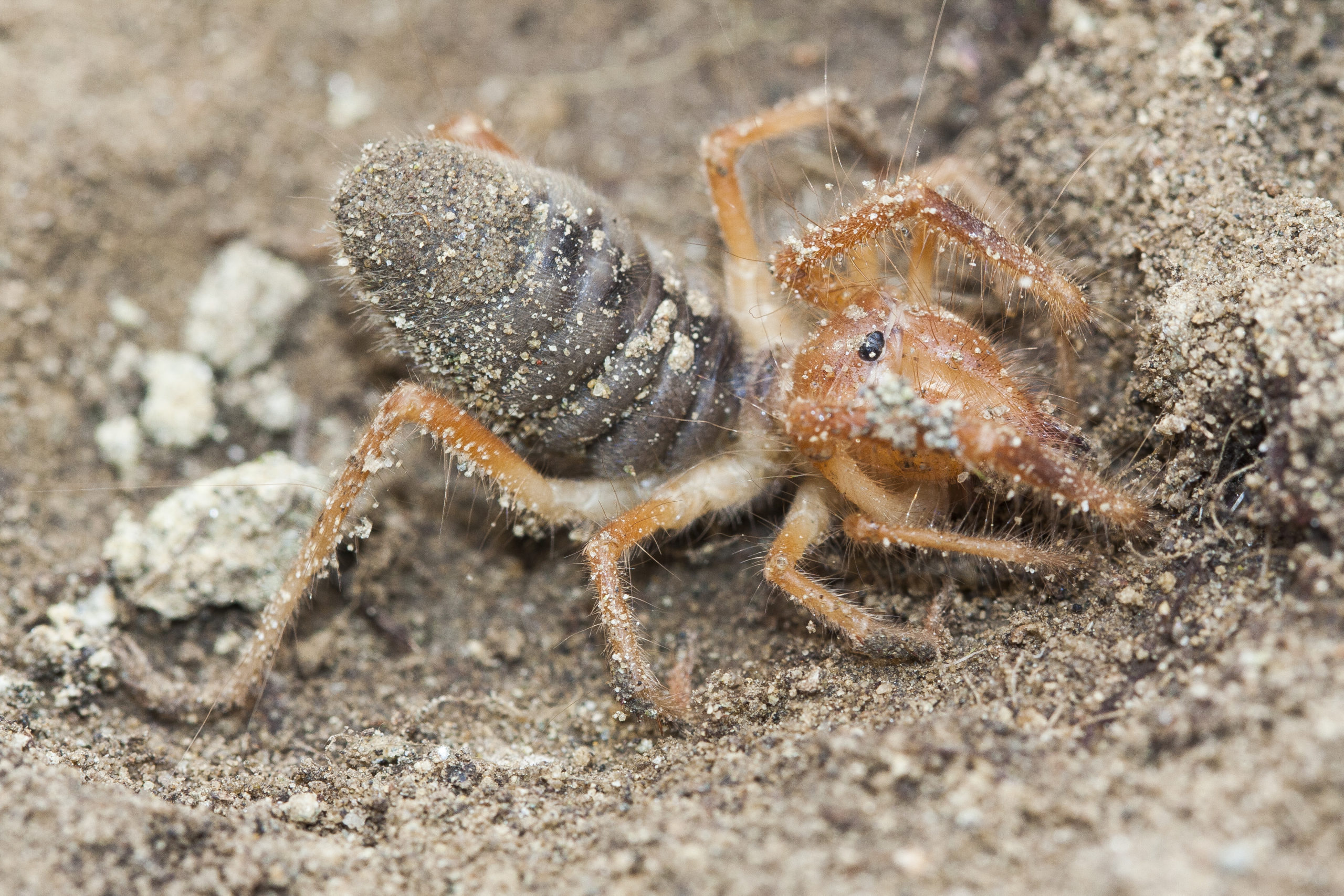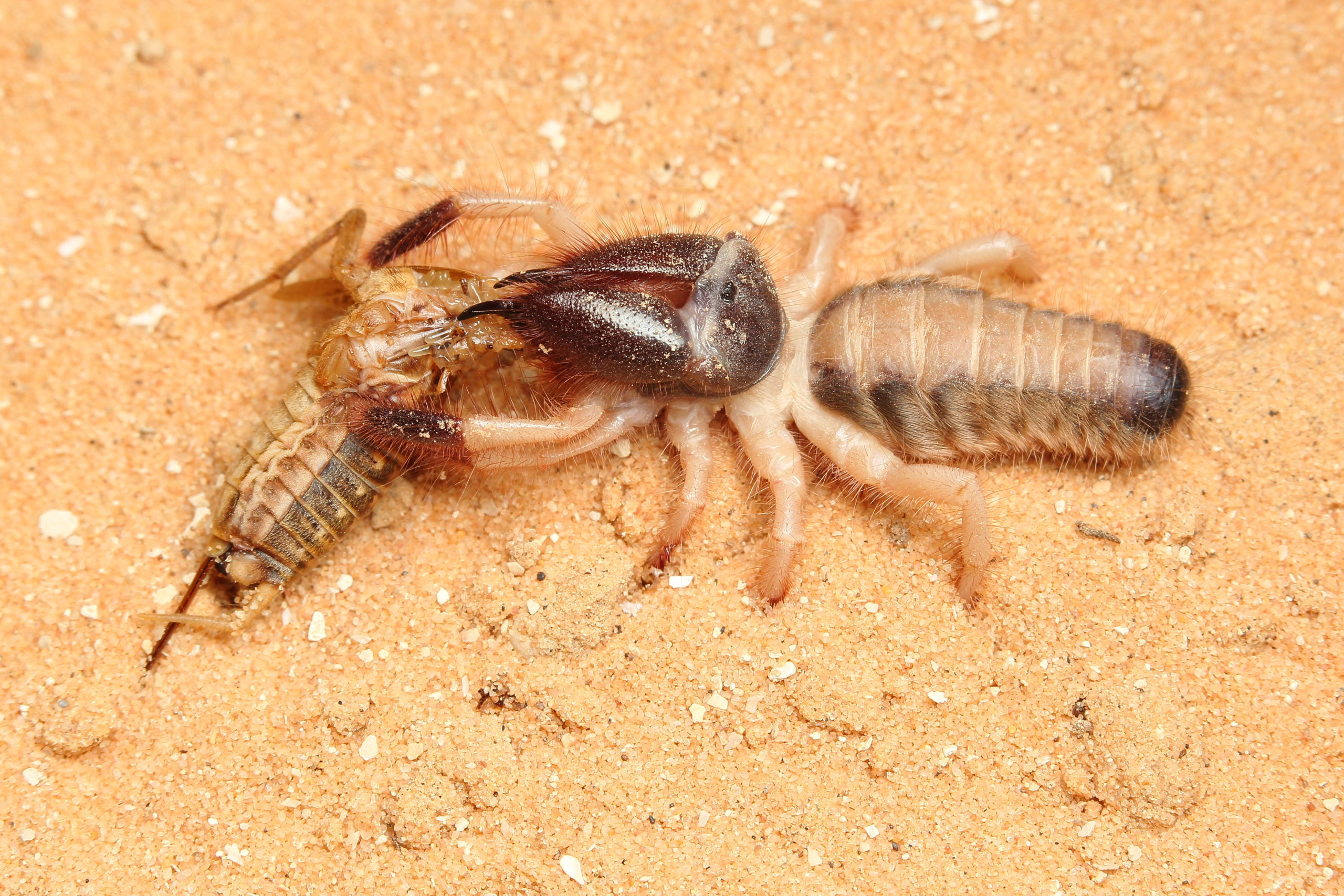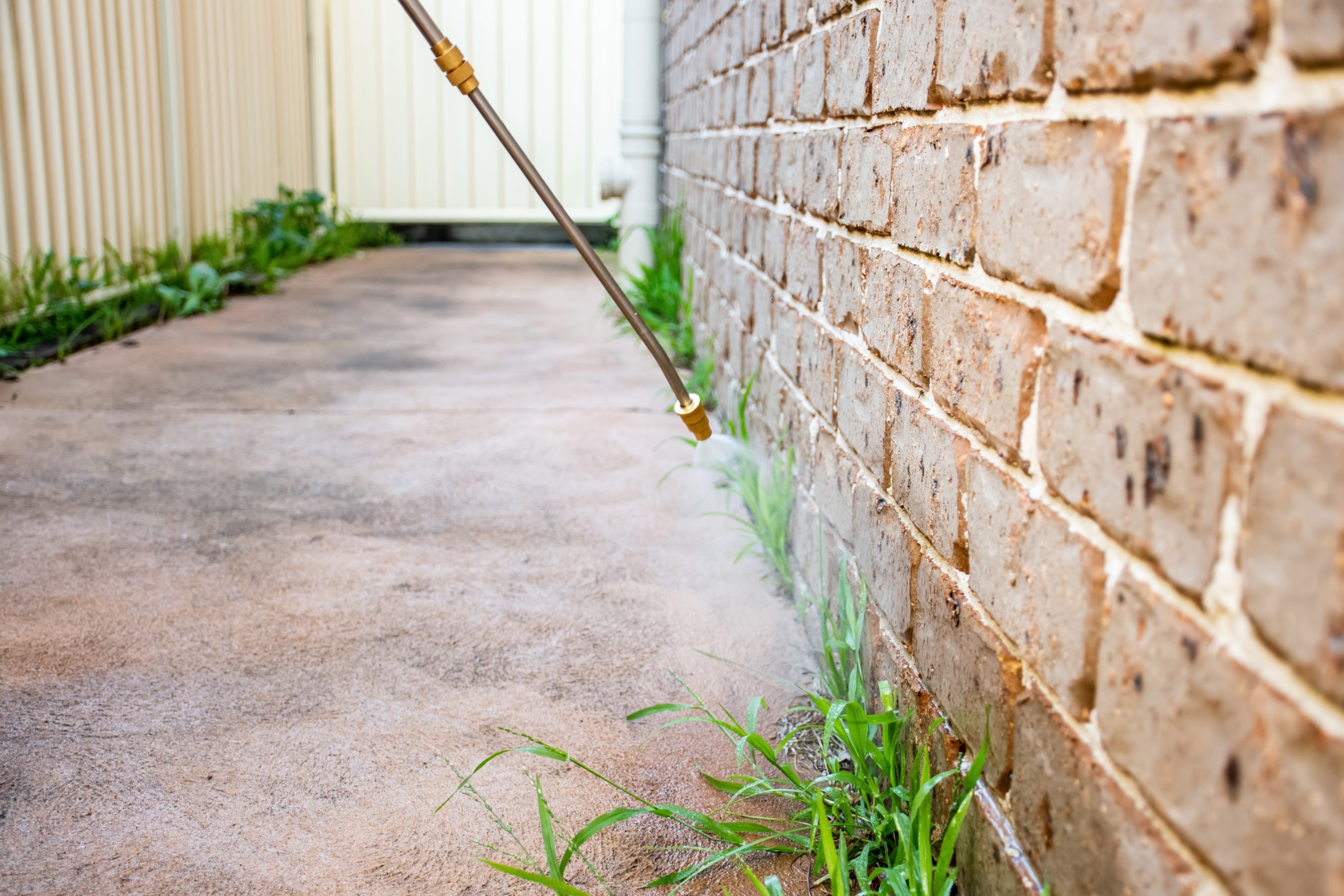Camel Spiders: Nature’s Nightmare
Camel Spiders: Nature’s Nightmare
Allow us to unlock a new arachnid-focused fear: the camel spider. Before the anxiety level reaches the ceiling, we will note that these creatures are not commonly found in populated areas and are not dangerous to us. But that doesn’t take away from their monstrous appearance and stress-inducing speed. Camel spiders are their own group, since they are not technically spiders. They are a combination of spiders and scorpions with a dash of mantids. With that in mind, let’s take a closer look at this curse of a creature and what makes it so scary.
A Tale of Two Nightmares

Camel spiders are their own Order of arachnids, known as solifugids, and are often compared to spiders and scorpions. They are relayed to spiders, but they are not technically synonymous. There are about 1,100 species of camel spiders alone, most of which not studied more closely. Males and females look pretty similar from a distance, but the most discernible differences are that male camel spiders are smaller and have longer legs than the females. Both are capable of making buzzing or clicking sounds with their mouths, which would be a disturbing sound to hear while out on a walk. This sound is made by the camel spider clicking its mouthparts, a.k.a. chelicerae, in a process called stridulation (like crickets). Since camel spiders also use their terrifying mouths to mate, understand their surroundings, and pierce their prey, it is wise to stay away from their teeth-filled mouths.
The camel spider is also known as the wind scorpion or sun spider. They are not venomous and they don’t have the ability to spin webs. So, what do they do? The answer involves a lot of running and eating, both of which are frightening to witness. Camel spiders are capable of running up to 10 miles per hour, but they don’t usually stay at that pace. They can, however, continue running for hours as they search for food. Their long legs enable them to move quickly and they can even run sideways and backwards. As if that weren’t enough, camel spiders can jump up to three feet in the air. Since they get their food by literally going out and running into it, these critters need all of the agility they can get.
Camel spiders are not always easy to spot when walking through their home turf. This is because they are most active at night, in addition to living underground when they aren’t running around. This may be why they are so light compared to similar creatures. They are beige or light brown in color, hairy, and have unnervingly long legs. These legs are in 4 pairs and each one is segmented multiple times, but we don’t recommend getting close enough to study them in the wild. There have been plenty of false claims and rumors about these creatures for years, especially when photos from the Middle East made it seem like they are the size of a human head (thankfully, they are not!). Considering the fact that they can be anywhere from .4 to 6 inches long normally, they do not have many inviting qualities to them anyway.
At Least They Live Underground…

Since they are not spiders and cannot spin webs, camel spiders need to make their homes elsewhere. They are native to desert climates, and can be found on just about every continent as a result. Camel spiders can be active during the day as well, but they need to constantly find shade to preserve their energy. This is why they burrow underground most of the time, as it is the easiest way to be sure that they will have a home without a lot of sunlight. Camel spiders also like to live under rocks and other natural barriers. If they can’t find shade near their home, they will run to the next shady spot, which could be an unsuspecting person naturally casting their shadow. But when they partake in a nighttime-hunt, camel spiders seek out any light they can find, so it just seems like they are always searching for the opposite of whatever is most abundant at that time.
This love for shelter and being underground could also be why female camel spiders lay their eggs in the soil. There can be anywhere from 50 to 200 eggs in one batch, all of which are kept in the ground until they hatch with the mother guarding them the whole time. Camel spiders can also be found in grasslands or forests, so they don’t need a dry climate to survive. They just want an expansive area with plenty of dirt and opportunities for meals, which is a pretty long list for these hunters.
An Intense Diet

Examining the process of camel spiders finding and eating their prey is just another reason we are thankful that we are much larger than these horrors. Camel spiders are predators themselves, meaning they go out and hunt for their meals. These carnivores will run for miles until they find a tasty meal in the form of a small creature or insect. Camel spiders have two pincers that they use to capture prey. These pincers are also used to inject digestive juices into the prey. Once the camel spider has injected its prey with digestive juices, it will wait for the juices to break down the prey’s tissues. After that, the camel spider will suck out the liquefied insides of its meal. In other words, they eat their prey from the inside out. If that doesn’t give you nightmares, we don’t know what will.
With the strong mouthparts and high stamina, camel spiders are a true threat to all kinds of ground-dwelling critters. They are not too picky, seeing as how they will eat just about anything that they run into. Some of their favorites include beetles, silverfish, wasps, scorpions, termites, spiders (ironic!), and lizards. However, since they are not very picky for being hunters, camel spiders can go big with their meals. There have been instances where they eat birds or snakes that happened to be in the wrong place at the wrong time. Since camel spiders can grip prey with their strong palps in the front of their heads, there is no telling what they have consumed as a mid-run meal out in the wilderness.
Pest Control is Here to Help

While camel spiders might be nature’s nightmare, they are not dangerous to humans. They might bite if they feel threatened, but their bites are not venomous and they are not poisonous. Female camel spiders have been known to eat the males after mating, so they aren’t a very cuddly order anyway. Camel spiders are hunters by nature, so it is possible for them to mistake us for their next meal. If their bite breaks skin, the area can become infected. Please seek medical attention immediately if you have been bitten.
Camel spiders do have natural predators, like bats, toads, and scorpions, none of which are wonderful creatures themselves. But, thankfully, it is not common to see a camel spider waltzing through your backyard. Actual spiders are a different story though, and they can be a huge problem if they are poisonous or quickly reproducing. Since they are technically beneficial by nature due to their insect-centered diets, it can be difficult to decide if getting rid of the spider is worth it for your plants. Our pest control services makes this decision easier, as our eco-friendly treatments will eradicate the spider problems without harming your garden or yard. Contact us to learn how our team can ensure that your home stays spider-free, whether it’s normal arachnids or the cursed creatures that are camel spiders.
Citations
Bittel, J. (2017, August 9). Camel spiders are fast, furious and horrifically fascinating. Smithsonian Magazine. Available at https://www.smithsonianmag.com/science-nature/camel-spiders-are-fast-furious-and-horrifically-fascinating-180964439/ (Accessed on July 27, 2022).
Camel spider facts, pictures & information: Discover these little known relatives of spiders and scorpions. (n.d.). Active Wild. Retrieved on July 27, 2022, from https://www.activewild.com/camel-spiders/
Crawford, R. (n.d.). Myth: Too many “camel spiders” tall tales. Burke Museum. Available at https://www.burkemuseum.org/collections-and-research/biology/arachnology-and-entomology/spider-myths/myth-too-many-camel-spider (Accessed on July 27, 2022).
Szalay, J. (2014, December 16). Camel spiders: Facts & myths. Live Science. Available at https://www.livescience.com/40025-camel-spiders-facts.html (Accessed on July 27, 2022).
Request a Free Quote Today
(We do not share your data with anybody, and only use it for its intended purpose)
